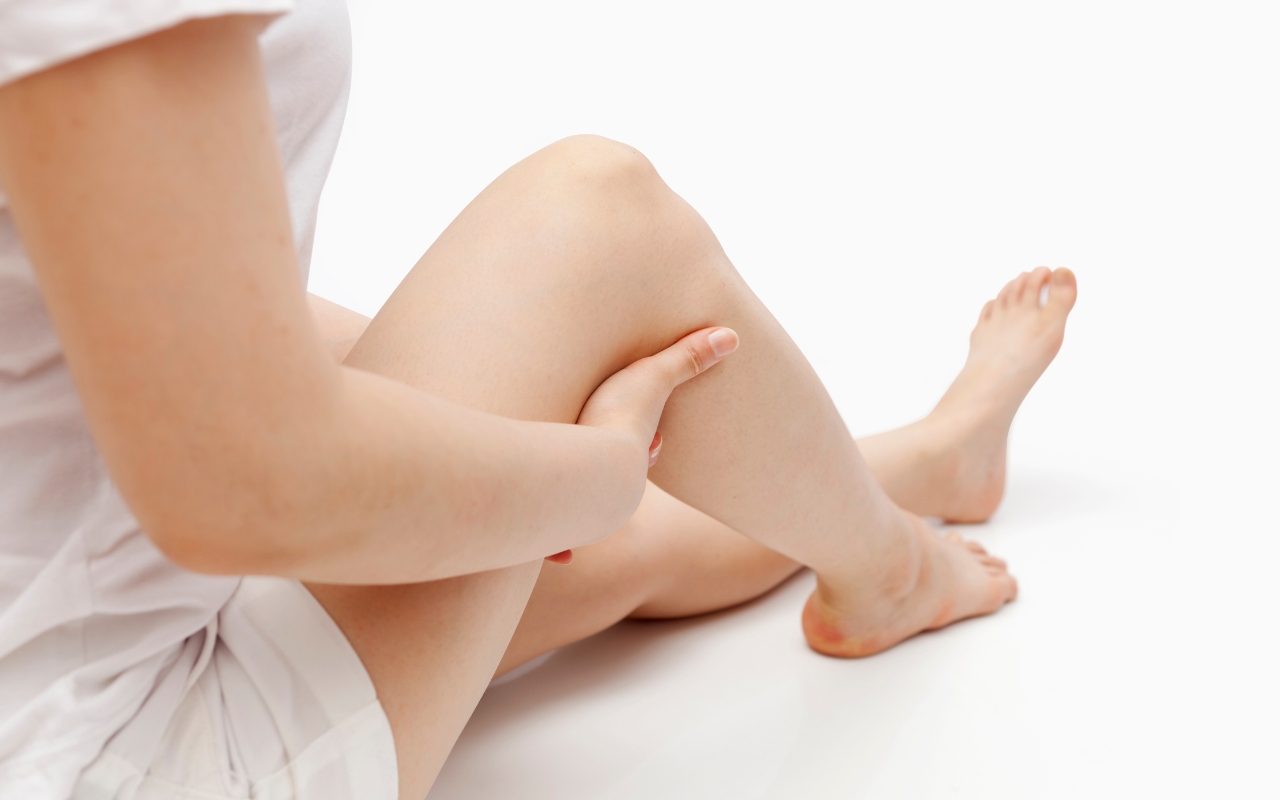Arthritis is a common condition that affects millions of people worldwide, causing joint pain, stiffness, and reduced mobility. While arthritis can significantly impact daily life, incorporating appropriate exercise routines can alleviate symptoms and enhance overall well-being. This article will explore various exercises tailored for different parts of the body, providing a comprehensive guide to managing arthritis through physical activity.
Understanding the Importance of Exercise for Arthritis
Exercise is a critical component of arthritis management. It can improve flexibility, strengthen muscles, and reduce joint pain. However, it's essential to approach exercise cautiously, especially if you haven't been active for a while. Starting slowly and gradually increasing the intensity can prevent overexertion and injury.
Benefits of Exercise for Arthritis Patients
Engaging in regular physical activity offers numerous benefits for individuals with arthritis:
- Increased Strength: Strengthening the muscles around the joints can provide better support and reduce pain.
- Improved Flexibility: Stretching exercises can enhance the range of motion, making daily activities easier.
- Better Weight Management: Maintaining a healthy weight reduces stress on the joints, particularly in weight-bearing areas like the knees and hips.
- Enhanced Mood: Physical activity releases endorphins, which can improve mood and overall quality of life.
For more detailed information on the benefits of exercise for arthritis, visit the Mayo Clinic's guide.
Specific Exercise Routines for Different Joint Areas
Exercises for the Toes, Feet, and Ankles
Foot and ankle exercises are crucial for maintaining mobility and reducing pain in the lower extremities. Here are a few exercises designed to help:
- Toe Curls: Sit comfortably with your feet flat on the floor. Gently curl your toes under and then stretch them out. Repeat this movement 10-15 times.
- Heel Raises: Stand near a wall or sturdy chair for support. Slowly lift your heels off the ground, standing on your toes. Hold for a few seconds before lowering your heels back down. Aim for 10-15 repetitions.
- Ankle Rotations: Sit or lie down with your legs extended. Slowly rotate your ankles in a circular motion, first clockwise and then counterclockwise. Perform this exercise for 10 rotations in each direction.
Exercises for the Shoulders
Shoulder exercises can help alleviate pain and improve mobility. Here are a few simple exercises:
- Shoulder Shrugs: Stand or sit with your arms at your sides. Slowly lift your shoulders towards your ears and then lower them back down. Repeat this exercise 10-15 times.
- Arm Circles: Extend your arms out to the sides at shoulder height. Make small circles with your arms, gradually increasing the size of the circles. Perform 10 circles in each direction.
- Wall Push-Ups: Stand facing a wall with your hands placed on the wall at shoulder height. Slowly bend your elbows, bringing your chest towards the wall, then push back to the starting position. Aim for 10-15 repetitions.
Exercises for the Elbows
Elbow exercises can strengthen the muscles around the joint, reducing pain and improving function:
- Bicep Curls: Hold a lightweight dumbbell or a resistance band in each hand. With your arms at your sides, slowly bend your elbows, bringing the weights towards your shoulders. Lower them back to the starting position. Repeat for 10-15 repetitions.
- Elbow Extensions: Sit or stand with your arm extended in front of you. Gently bend your elbow, bringing your hand towards your shoulder, then extend your arm back out. Perform this exercise 10-15 times on each arm.
- Triceps Stretch: Raise one arm overhead and bend the elbow, reaching your hand down your back. Use the opposite hand to gently push the elbow further back. Hold for 15-30 seconds and repeat on the other side.
Exercises for the Neck
Neck exercises can relieve stiffness and improve range of motion:
- Neck Tilts: Sit or stand with your back straight. Slowly tilt your head towards your shoulder, holding the stretch for a few seconds. Repeat on the other side. Perform 5-10 repetitions.
- Neck Rotations: Turn your head slowly to one side, looking over your shoulder. Hold for a few seconds, then return to the center. Repeat on the other side. Aim for 5-10 repetitions.
- Chin Tucks: Sit or stand with your back straight. Gently tuck your chin towards your chest, holding for a few seconds before returning to the starting position. Perform 5-10 repetitions.
Exercises for the Knees
Knee exercises can strengthen the muscles around the joint, reducing pain and improving mobility:
- Leg Raises: Lie on your back with one leg bent and the other straight. Slowly lift the straight leg to the height of the bent knee and hold for a few seconds before lowering it back down. Repeat 10-15 times on each leg.
- Hamstring Curls: Stand facing a wall or chair for support. Slowly bend one knee, bringing your heel towards your buttocks. Hold for a few seconds before lowering your leg. Perform 10-15 repetitions on each leg.
- Quad Sets: Sit with your legs extended and a rolled-up towel under your knees. Tighten your thigh muscles, pushing your knees towards the floor. Hold for 5-10 seconds before relaxing. Repeat 10-15 times.
For more information on knee exercises, visit the NHS's guide.
Exercises for the Back
Back exercises can help alleviate pain and improve flexibility:
- Cat-Cow Stretch: Start on your hands and knees. Arch your back towards the ceiling (cat position) and then dip it towards the floor (cow position). Move slowly between these positions for 10-15 repetitions.
- Child’s Pose: Kneel on the floor and sit back on your heels. Extend your arms forward and lower your chest towards the floor. Hold this position for 15-30 seconds and repeat 3-5 times.
- Pelvic Tilts: Lie on your back with your knees bent and feet flat on the floor. Slowly tilt your pelvis upward, flattening your lower back against the floor. Hold for a few seconds before relaxing. Perform 10-15 repetitions.
Exercises for the Hips
Hip exercises can strengthen the muscles around the joint, enhancing stability and reducing pain:
- Hip Bridges: Lie on your back with your knees bent and feet flat on the floor. Lift your hips towards the ceiling, squeezing your glutes, and hold for a few seconds before lowering back down. Repeat 10-15 times.
- Leg Lifts: Lie on your side with your legs straight. Slowly lift the top leg towards the ceiling and hold for a few seconds before lowering it back down. Perform 10-15 repetitions on each side.
- Hip Flexor Stretch: Kneel on the floor with one knee bent in front of you and the other behind you. Gently push your hips forward, stretching the hip flexor of the back leg. Hold for 15-30 seconds and repeat on the other side.
Exercises for the Fingers, Hands, and Wrists
Hand and wrist exercises can improve dexterity and reduce pain:
- Finger Bends: Hold your hand out straight. Slowly bend each finger towards your palm and then straighten it back out. Repeat 10-15 times on each hand.
- Wrist Flexor Stretch: Extend your arm in front of you with your palm facing up. Use the opposite hand to gently pull your fingers back towards your body. Hold for 15-30 seconds and repeat on the other hand.
- Grip Strengthening: Squeeze a soft stress ball or a rolled-up towel, holding for a few seconds before releasing. Perform 10-15 repetitions on each hand.
Tips for Exercising Safely with Arthritis
When starting an exercise routine, it's crucial to prioritize safety to avoid exacerbating arthritis symptoms:
- Keep the Impact Low: Opt for low-impact exercises like walking, swimming, or cycling to minimize joint stress. Water aerobics, in particular, can be beneficial as the buoyancy reduces pressure on the joints.
- Use Heat Before Exercise: Applying heat to the affected joints can relax muscles and reduce pain. Use warm towels, hot packs, or take a warm shower for about 20 minutes before starting your exercise routine.
- Move Gently: Begin with gentle range-of-motion exercises to warm up your joints. Spend 5-10 minutes on these exercises before moving to more strenuous activities.
- Progress Gradually: Increase the intensity and duration of exercises slowly. Listen to your body, and do not push through sharp pain or discomfort. If you experience pain lasting more than two hours after exercise, you might be overexerting yourself.
- Use Ice After Exercise: Applying ice to swollen joints for up to 20 minutes post-exercise can help reduce inflammation and pain.
For additional guidance on starting an exercise program for arthritis, refer to the Mayo Clinic's advice.
When to Stop Exercising
Knowing when to stop exercising is crucial to prevent further injury. Discontinue your exercise routine if:
- Symptoms Worsen: If your symptoms worsen during or after exercise, it's essential to stop and rest. Persistent pain or new pain should be evaluated by a healthcare professional.
- New Pain Develops: If you experience new pain in other areas of your body, this could indicate that the exercise is not suitable or is being performed incorrectly.
For more details on recognizing appropriate exercise intensity, see the NHS guidelines.
Optimizing Your Exercise Routine
To maximize the benefits of exercise for arthritis, consider the following tips:
- Consistency is Key: Regular exercise is more beneficial than sporadic, intense workouts. Aim for consistency to build strength and flexibility over time.
- Customize Your Routine: Everyone's arthritis is different. Tailor your exercise routine to suit your specific needs and limitations. Consult with a physical therapist or healthcare provider for personalized advice.
- Incorporate Variety: Mix different types of exercises, including stretching, strengthening, and aerobic activities, to keep your routine balanced and interesting.
- Monitor Progress: Keep track of your exercise routine, noting any improvements or setbacks. This can help you adjust your activities to better suit your needs.
For further resources on creating an effective exercise plan for arthritis, visit the Arthritis Foundation's website.
Conclusion
Exercise is a powerful tool in managing arthritis pain and stiffness. By incorporating specific exercises tailored to different joint areas, along with following essential safety tips, individuals with arthritis can significantly improve their quality of life. Regular physical activity not only enhances joint function but also boosts overall health and well-being. Remember to consult healthcare professionals for personalized guidance and support on your journey to managing arthritis effectively.











